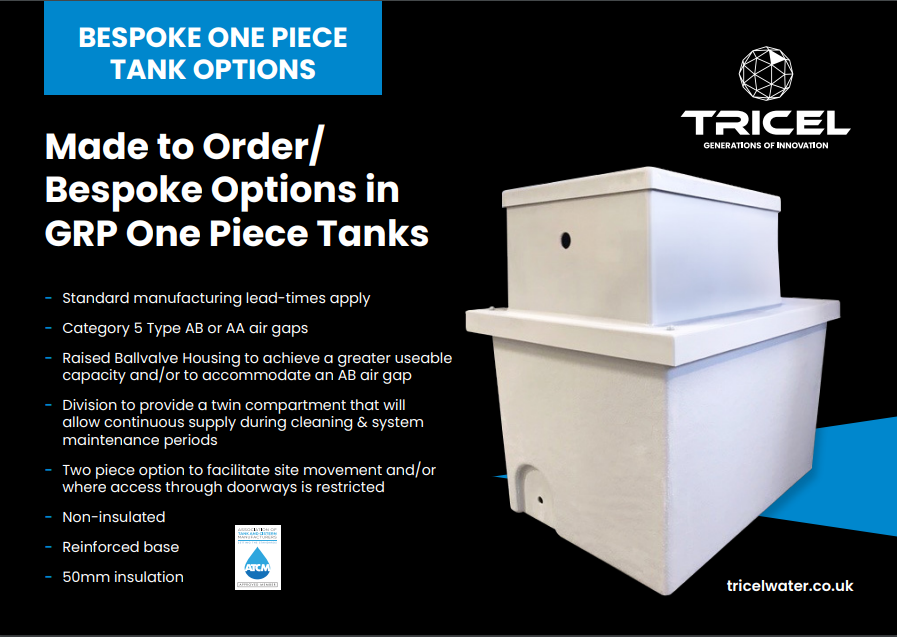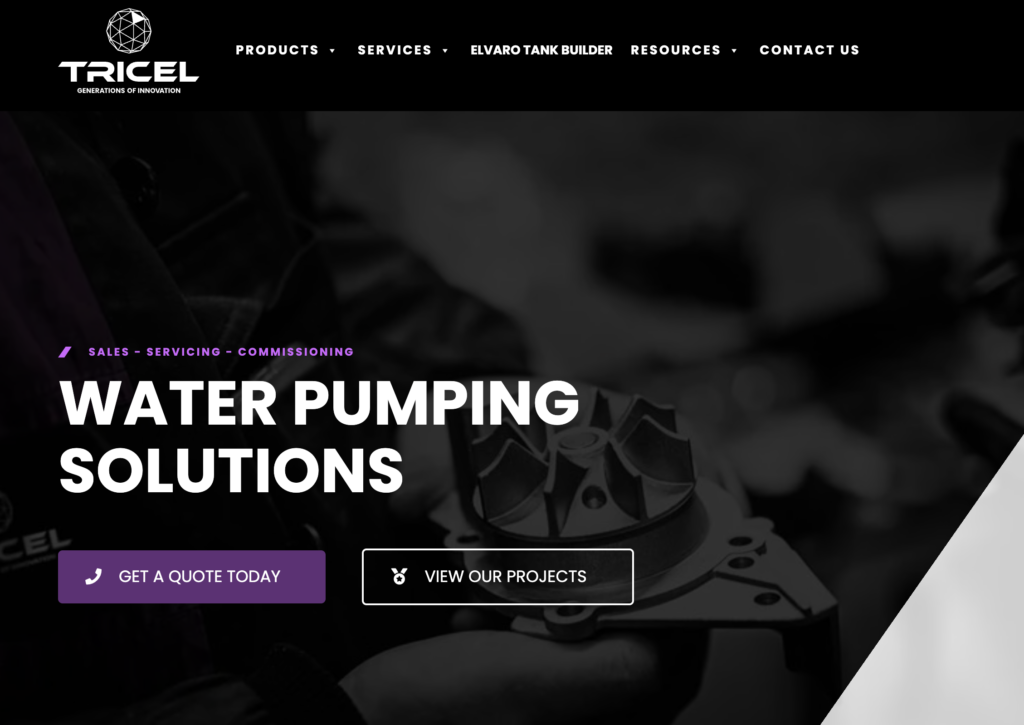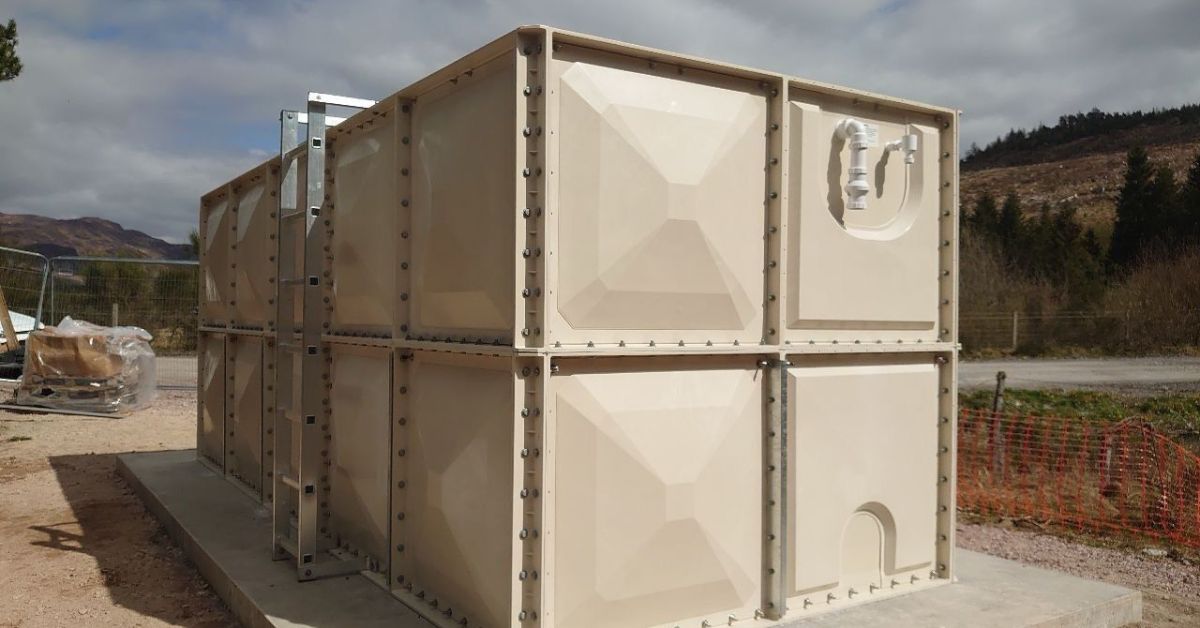
One piece tanks v sectional tanks: Which is right for your project
Home » Product Guides & Comparisons » One-Piece Water Tanks vs Sectional Tanks: Which is Right for Your Project?

When selecting a Water Tank GRP for your project, two popular options stand out: one-piece water tank GRP and sectional tanks. Each type offers distinct advantages, making them ideal for different applications, ranging from domestic water storage to large-scale sectional projects. In this article, we will explore the key differences between these options, examine their suitability for various projects, and consider important cost factors, helping you make an informed and confident decision.
key difference in design
One-piece water tanks, also known as GRP water tanks, are seamless, single-unit structures designed for optimal hygiene and simplicity, especially for potable water storage. These tanks come in a wide range of capacities, from 45 to 16,000 liters, making them a versatile choice for smaller projects. On the other hand, sectional tanks are modular systems made up of interlocking panels that can be easily assembled on-site. As a result, sectional tanks offer greater flexibility and can be customized to suit various sizes and structures, with capacities ranging from 1,000 liters to over 4 million liters.
Therefore, based on your specific project needs, you can select the most suitable option by considering factors such as capacity, installation requirements, and customization potential.
Project Suitability | One Piece Water Tank
One-piece water tank GRP are ideal for several applications:
Loft spaces: Their compact design makes them perfect for use as cold water loft tanks, fitting easily into smaller, confined areas.
GRP enclosures: These tanks are also suitable for external buildings or custom-built enclosures, offering both durability and flexibility.
Projects requiring urgent implementation: With their straightforward installation, one-piece water tanks provide a simple solution for small-scale developments or when a quick, reliable water storage option is needed.
Locations with limited access: Available in sizes up to 12,000 liters, these tanks are perfect for areas with restricted entry, where larger tanks might not fit or be feasible.
Overall, one-piece water tank GRP offer practical and versatile solutions for a wide range of needs.
Project Suitability | sectional tanks
Sectional tanks are best suited for a variety of applications, including:
Large-scale projects: These tanks are perfect for storing vast quantities of water, with capacities reaching up to 2,000,000 liters, making them ideal for large-scale operations.
Plantrooms: Sectional tanks are well-suited for separate basement areas, where they can be installed to accommodate larger storage needs.
Building rooftops: Designed to withstand varying weather conditions, sectional tanks offer a durable and reliable solution for rooftop installations.
Sites with restricted access: Thanks to their modular design, sectional tanks can be easily transported and assembled on-site, making them an excellent choice for locations with limited access.
Overall, sectional tanks provide flexibility and scalability, making them the preferred option for projects requiring larger capacities and customisable installations.
Check out these three Sectional Tank Projects for more inspiration:
- 130,000L Tank Installation on Glasgow
- Sectional Tank Installation in Surrey
- 2,000 Litres Tank Installation
sectional tank base options
cost and maintenance considerations
One-Piece Tanks (CWST)
- Generally more cost-effective for small cold water tanks.
- Low maintenance due to seamless construction
- WRAS compliant, ensuring safe drinking water storage. See potable water tanks
Sectional Tanks (CWST)
- More cost-efficient for larger storage requirements
- Virtually zero maintenance needed due to durable materials and design
- Offer significant cost savings compared to traditional concrete tanks
What are the main advantages of one-piece water tank grp over sectional tanks
One-piece tanks offer several key benefits that make them an attractive choice for various projects:
Simplified installation: Since one-piece tanks require no assembly on-site, they can be installed quickly and easily, saving both time and effort.
Lower maintenance: Thanks to their seamless construction, these tanks have minimal maintenance requirements and fewer potential points of failure, reducing long-term upkeep.
Enhanced hygiene: The lack of joints or sealants in one-piece tanks significantly reduces the risk of contamination, making them especially suitable for potable water storage.
Cost-effectiveness for smaller capacities: For smaller storage needs, typically up to 16,000 liters, one-piece tanks are generally more economical compared to other options.
Versatility in tight spaces: These tanks are ideal for locations with limited access, such as loft spaces or small enclosures, offering a space-efficient solution.
Rapid deployment: When projects require urgent implementation, one-piece tanks provide a fast and straightforward solution, allowing for quick deployment.
WRAS compliance: Many one-piece tanks are WRAS approved, ensuring safe drinking water storage without the need for additional modifications.
Durability: Made from materials like GRP (Glass Reinforced Plastic), one-piece tanks offer an excellent strength-to-weight ratio, ensuring long-term resilience and durability.
While one-piece tanks excel in these areas, it’s important to keep in mind that sectional tanks have their own advantages, particularly when it comes to larger storage capacities or projects with specific space or access constraints. Therefore, the choice between one-piece and sectional tanks will depend on your specific requirements and project scope.
choosing the right tank
The choice between one-piece and sectional tanks depends on several factors:
- Capacity Requirements: For smaller storage needs (up to 16,000 litres), one-piece tanks are often sufficient. For larger capacities, sectional tanks are the way to go
- Installation Location: Consider the access to your installation site. One-piece tanks require sufficient space for delivery and installation, while sectional tanks can be assembled in tight spaces
- Budget: One-piece tanks are generally more cost-effective for smaller capacities, while sectional tanks offer better value for larger storage needs
- Future Expansion: If you anticipate needing to increase your storage capacity in the future, sectional tanks offer more flexibility for expansion.
- Maintenance: Both types require minimal maintenance, but one-piece tanks may have a slight edge in this regard
Read More...
- Water Tank Installation & Maintenance
- Cold Water Storage Tanks
- Case Studies

Cold Water Storage Tank Compliance in the UK: Regulations, Standards & Best Practices
Ensuring compliance with cold water storage tank regulations in the UK is essential for safeguarding water quality, maintaining system efficiency, and meeting legal obligations. From WRAS approval and LPCB certification to industry standards such as BS EN 13280, strict requirements govern the design, installation, and maintenance of water tanks.
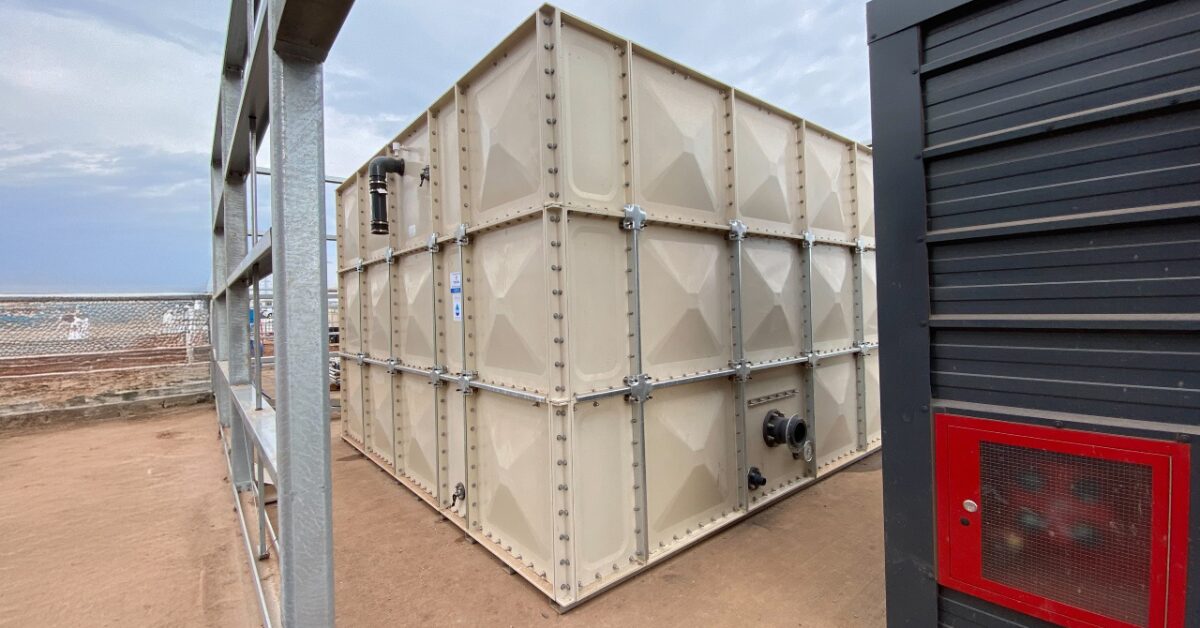
How to Maintain a Compliant Cold Water Storage Tank
Maintaining a cold water storage tank is not just about ensuring a reliable water supplyit is also a legal and safety requirement. A poorly maintained tank can pose serious risks, including bacterial growth such as Legionella, structural deterioration, or non-compliance with current regulations.
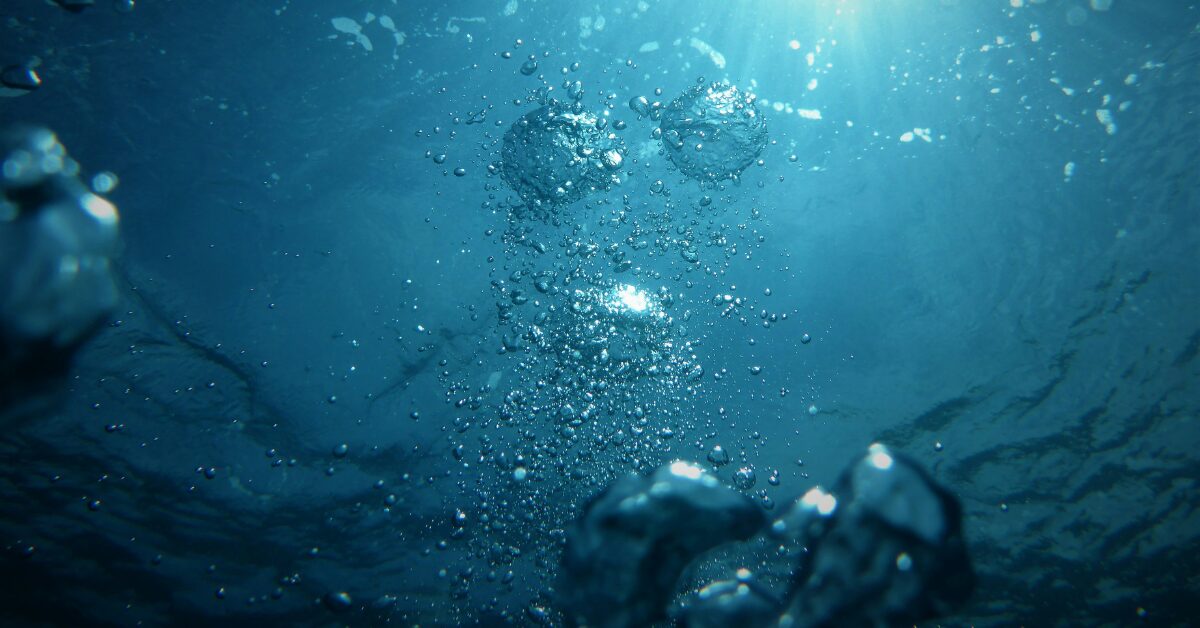
Leak in Water Tank: Causes, Prevention, and Solutions
Water tank leaks can lead to significant structural damage and water loss. Common causes include corrosion, poor installation, and lack of maintenance. To prevent leaks, it's essential to ensure proper installation, use high-quality materials, and conduct regular inspections. For detailed guidance on causes, prevention, and solutions for water tank leaks, refer to Tricel Water UK's comprehensive article.
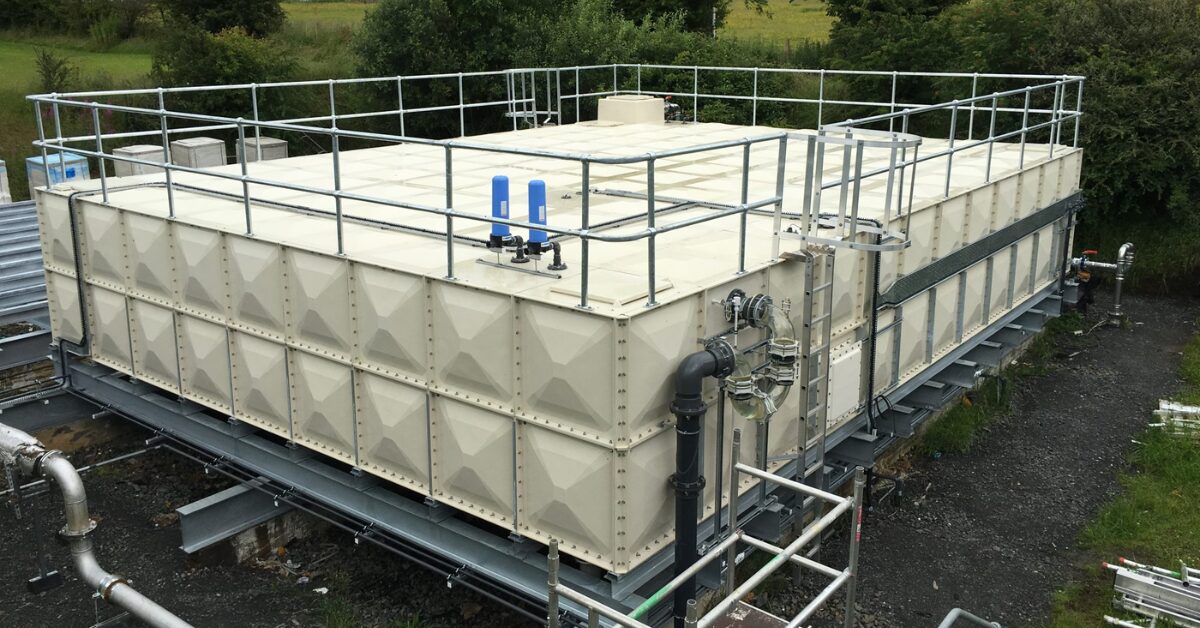
Importance of Base Levelling Steels
Proper base levelling is essential for the stability and longevity of your water tank. This guide explains why base levelling steels are crucial for preventing structural issues and ensuring your tank performs optimally over time.

